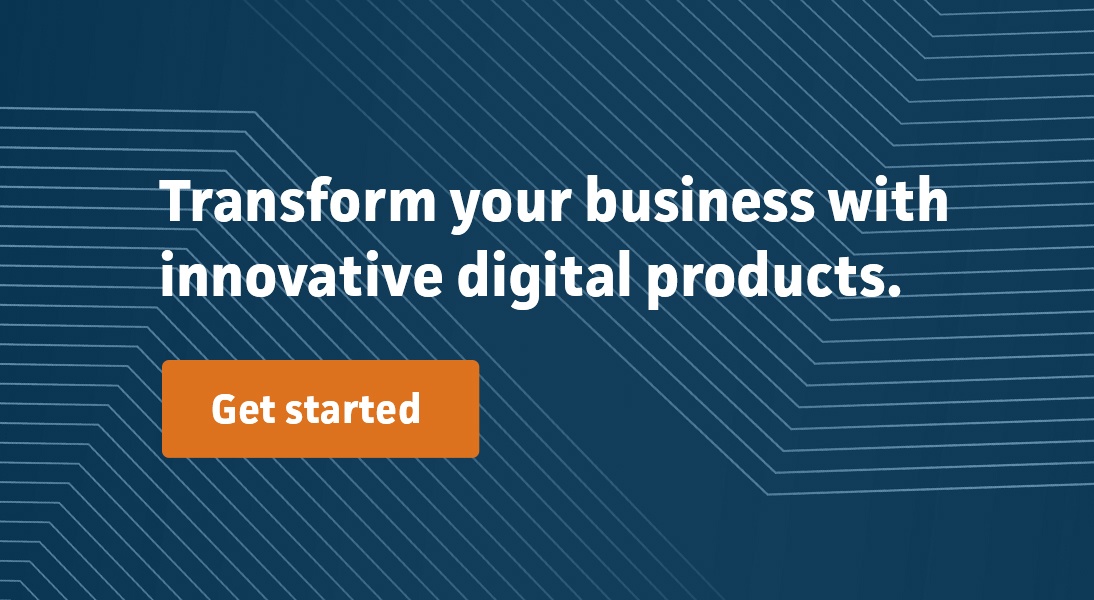Digital products have become an indispensable part of business operations and customer interactions. Online interactions that drive commerce and digital products are the bridge between businesses, their customers and their employees. They offer unparalleled accessibility, efficiency and convenience, making them critical for business success. A digital product — from our perspective — is a software solution that creates value for the organization, their employees and/or their clients. Mobile apps, cloud-based software and websites are some examples of digital products we have helped our clients create.
Custom software development firms play a crucial role in crafting unique and valuable digital solutions that meet the specific needs of their clients. Their expertise is not just in coding or aesthetics; it’s about creating a seamless, user-centric experience that adds tangible value to the business.
Determining the true value of a digital product can be a complex task, as it encompasses a range of factors beyond mere functionality. While the importance of digital products is evident, understanding and quantifying their value is often overlooked. To grasp the impact of these products, it’s essential to understand the metrics that define their success.
Defining Digital Product Value
The value of a digital product is a multifaceted concept that encompasses its ability to solve problems, enhance productivity, and improve customer and employee experiences to drive business growth. It’s not just about the features and functionalities of the product, but also about the intangible benefits it delivers to its users along with strategic goal alignment.
From user experience to functionality, a number of factors contribute to how users perceive the value of a digital product. Identifying and optimizing these elements is key to enhancing overall product value. User experience and design are not mere aesthetics; they are integral components of a digital product’s value proposition. A seamless, visually appealing design may enhance user satisfaction and contribute significantly to perceived value. Other factors that contribute to perceived value include the following:
- Problem-solving: Does the product effectively address a specific pain point or challenge for users?
- Productivity Enhancement: Does the product streamline processes, save time or automate tasks that lead to increased productivity?
- Customer Experience: Does the product provide a seamless, intuitive and enjoyable user experience?
- Business Growth: Does the product attract new customers, help retain existing ones or generate new revenue streams?
Key Metrics for Measuring Digital Product Value
While the overall value of a digital product can be subjective, certain metrics can provide valuable insights into its effectiveness and impact. Gartner, Forrester and McKinsey all have perspectives on metrics for monitoring and measuring the value of a digital experience, and we’ve narrowed the focus to B2B operations:
- User engagement is a cornerstone metric for digital product success. It goes beyond the number of clicks and includes active participation, time spent using the app, and the overall interaction users have with the product.
- Custom software development allows for personalized, intuitive solutions that cater to specific user needs. This, in turn, boosts engagement as users are able to tailor the product to suit their preferences and needs.
- Customer satisfaction and feedback is a direct reflection of a digital product’s value. Actively seeking and leveraging feedback provides invaluable insights into what works and what needs improvement.
Custom Software Development’s Impact on Value
Custom software development ensures digital products align perfectly with unique business requirements. This tailored approach makes certain functionality meet the needs of users, eliminating unnecessary features while bolstering those critical to success.
The efficiency of custom software development accelerates the product development lifecycle. This not only reduces time-to-market, but also ensures a quicker response to evolving market demands.
In a dynamic business environment, scalability and adaptability are paramount. Custom software development allows for seamless integration of new features and technologies, and this means the product remains relevant and effective.
A successful launch is just the beginning. Regular updates and enhancements based on user feedback and emerging technologies keep the digital product at the forefront of innovation. Ongoing maintenance and continuous improvement is essential to make sure a product performs well and keeps pace with evolving business needs and market shifts.
Design’s Influence on Digital Product Value
User-centered design places the end-user at the forefront of the development process. By understanding user needs and behaviors, it’s possible to align human interactions with business outcomes to deliver results for both users and the business.
A well-designed interface instills a sense of quality and attention to detail, suggesting that the product is thoughtfully crafted and intuitive to use. Additionally, a visually appealing and intuitive interface can contribute to a brand’s image, fostering trust and loyalty among users.
Real World Examples
Delivering high performance results starts with great ideas. Our team works collaboratively with clients to solve their business challenges, create new revenue streams, automate outdated processes, and provide strategic guidance and support for the lifetime of their digital product.
One example of a product that created a new revenue stream, and one that helped the company’s internal team increase their efficiency, are described below:
- An international trade association of petroleum asphalt producers, manufacturers and affiliated businesses created a new revenue stream with the development of a SaaS platform that enables its members to navigate complex regulatory processes.
- A company providing industrial services for residential, commercial, industrial and municipal clients was growing so fast, they had outgrown their scheduling process. They also realized a custom software solution would make scheduling more efficient, allow them to capture data for in-depth analysis and bring new business units into their process quickly and easily.
Measuring the value of a digital product is not a one-size-fits-all endeavor. It requires a holistic approach, considering development, design and user experience.
Mission Data was recently acquired by Growth Acceleration Partners, which now makes it possible for our team to deliver impactful digital products on a larger scale. Whether you are developing your project from scratch or redesigning an existing digital product, the GAP team of professional and creative UX/UI designers, developers and strategists will help you make your project a success.




